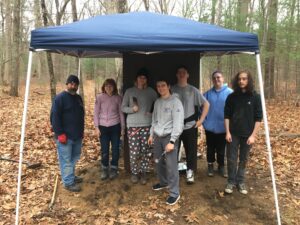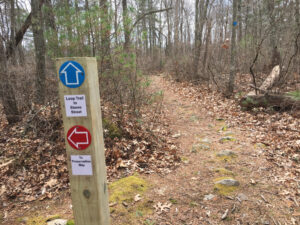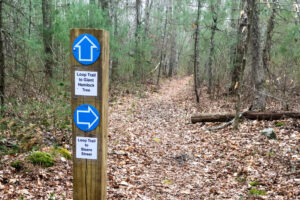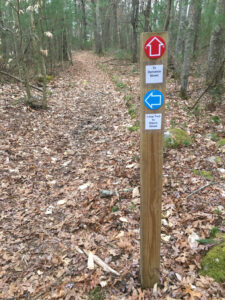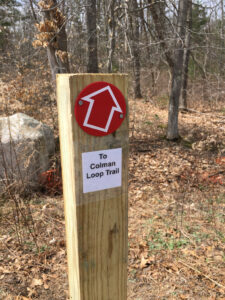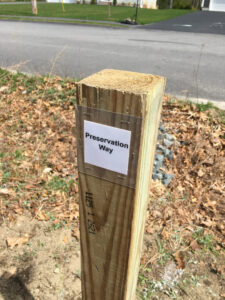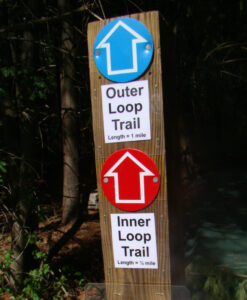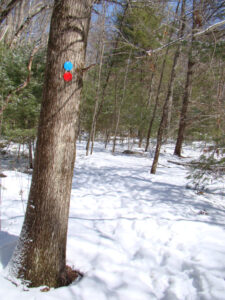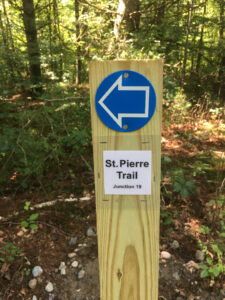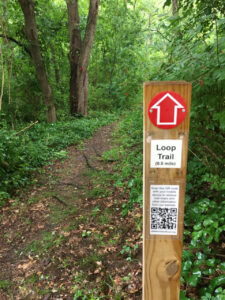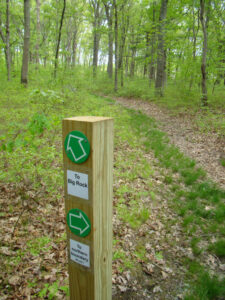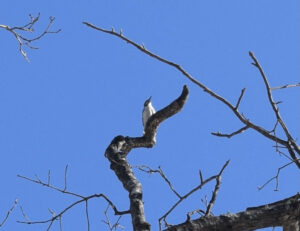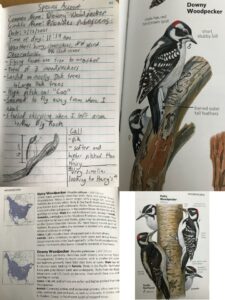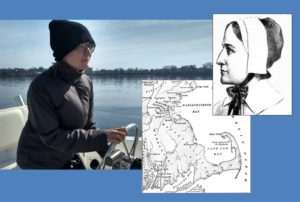There is no end to the variety of fascinating requests the land trust has received over the years for activities to be conducted on our preserves. Last spring, writer Jane Breakell set out to retrace the steps of banished Puritan dissenter Anne Hutchinson, who walked from Quincy, Massachusetts, to what was to become Portsmouth, Rhode Island, in April, 1638.
On April 10, 2018, Jane, midway through her journey, spent the night in a tent on the Leach Sanctuary. Two days later, she crossed Narragansett Bay by boat to reach her destination, Aquidneck Island, as did Anne Hutchinson before her. Below are some brief excerpts from an essay that Jane wrote about her experience for a recent issue of the New England Review (Vol. 39, No. 3).
Write Like a Puritan by Jane Breakell
“A woodcut shows a woman in a long black dress with a square white collar and a black hood, one hand at her side, one fist held to her chest, speaking, it appears, to a group of old men who are seated at a table, pulling at their beards, peering at her. If anyone can talk to God, then anyone can justify her own choices, words, actions, with or without the approval of the elders. From this kind of magical thinking, it is no great distance to amoral anarchy. When she would not recant, they kicked her right out. She had been a voluntary exile from England, braving the wilderness of the New World. She was now also an exile from Massachusetts, but she considered neither home. The bounds of my habitation are cast in heaven, she said, and walked out of Boston, into the real wilderness. She resettled herself on an island to the south, in what became the state of Rhode Island, not far from where I grew up. What takes ninety minutes by car today took her, on foot in 1638, six days. Eventually she left Rhode Island for New York. There, after refusing to evacuate during a Siwanoy raid (against the advice of her more experienced neighbors), she was killed.
“I’ve come to understand that Anne Hutchinson’s story, the struggle between doubt and assurance, the voices of elders and the voice in her own head, must be part of mine.
“…Specifically, I must retrace Anne Hutchinson’s long journey from Boston to Rhode Island in an attempt to reconsider New England—home of self-satisfied tradition—as wilderness, frontier. By reenacting this long-past drama of belonging, I want to learn about those questions we still ask ourselves: what is the right way to live? On whom can we rely to tell us? What do I need to do, where do I need to go, to be the right kind of person?
“…Instead of woolen clothes and wooden overshoes, I wear yoga pants and hiking boots with Gore-tex. Instead of carrying or gathering food, I stop for lunch at Ruby Tuesday’s; instead of sleeping out, I book Airbnbs for all but one night. And while Hutchinson sent a scout ahead to plot a route through forests, I follow a route chosen by Google Maps. She walked through forests, dunes, and swamps that have since been replaced by paved roads, village squares, college campuses, and Dunkin Donuts. When I read the names of the towns we will pass through, they evoke not wilderness but radio commercials for discount shoes and tires.
The point is to walk where she walked, which I do. It’s just different now.”

While reenacting the journey of Anne Hutchinson, Jane Breakell pitched her tent in the Phil and Ginny Leach Wildlife Sanctuary, in a spot near this lean-to, which Jane described as “a fortuitous illustration of the kind of structure the Hutchinson party probably slept in.” The exact route taken by Hutchinson is not known, but Jane said “I passed through Attleboro because it was the only place I was able to camp out that was even close to where I thought she walked–most of the way was really lacking in anything like wilderness.” Image credit: Jane Breakell


